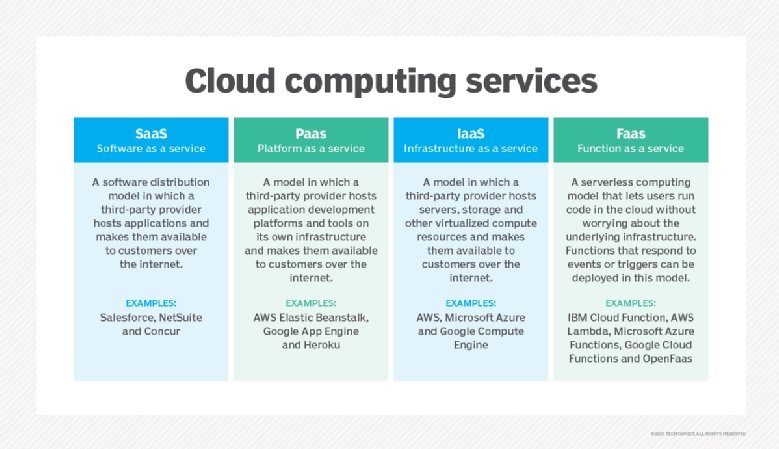Platform-as-a-Service
Platform as a service (PaaS) is a cloud computing model where a third-party provider delivers hardware and software tools to users over the internet. Usually, these tools are needed for application development. A PaaS provider hosts the hardware and software on its own infrastructure. As a result, PaaS frees developers from having to install in-house hardware and software to develop or run a new application.
PaaS tools tend to be touted as simple to use and convenient. An organization might find the move to PaaS compelling considering potential cost savings over on-premises alternatives.
How does PaaS work?
As mentioned above, PaaS does not replace a company's entire IT infrastructure for software development. It is provided through a cloud service provider's hosted infrastructure. Users most frequently access the offerings through a web browser. PaaS can be delivered through public, private and hybrid clouds to deliver services such as application hosting and Java development.
Other PaaS services include the following:
- development team collaboration;
- application design and development;
- application testing and deployment;
- web service integration;
- information security; and
- database integration.
Users will normally have to pay for PaaS on a per-use basis. However, some providers charge a flat monthly fee for access to the platform and its applications.

- Cross Cutting Concern
- Deployment Pattern
- Deployment platform
- Access Token
- Communications
- Data consistency
- MACH Architecture
- API-First
- API Marketplace
- Service Mesh
- Loosely Coupled
- On-Premises
- Headless Systems
- Microservices
- Service Template
- Platform-as-a-Service
- u-nat
- Vector Attack
- Candary Deployment
- blue-green
- API fundamentals
- Serverless
- Minimum Viable Product
- Mock Server
- Stakeholders
- Test Server
- Deployment versioning
- Cloud Environment
- API Idea
- Backend for Frontend
- Entry Point
- Strategy
- Refactoring
- Gather Stakeholders Requirements
- Sketch
- Planning
- Research Audience Needs
- Mock Release
- Prototyping
- Feedback from stakeholders
- Git Repository
- Test Release
- Test API
- Main Release
- Microservice Platform
- Cloud Native
- SLA
- Shared plumbing
- Plumbing